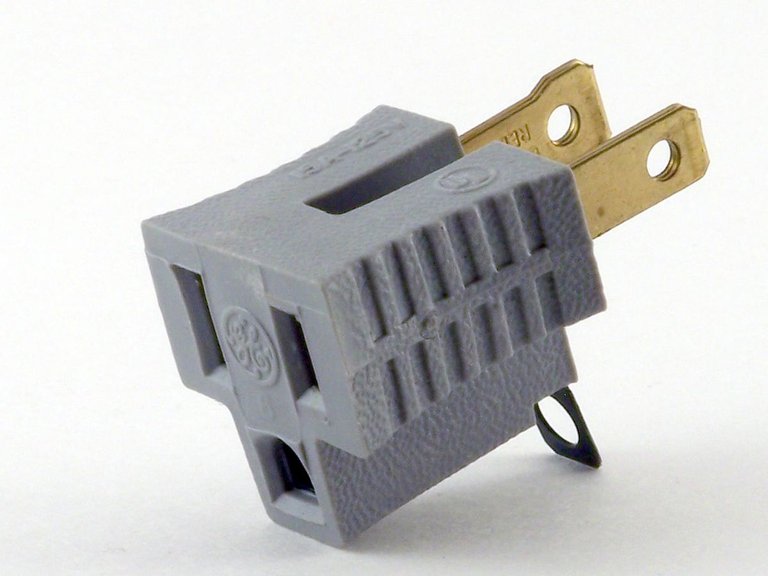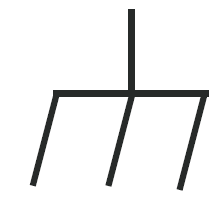I was in the studio today working with a vocalist and something happened that I want to discuss.
I got some buzz in my input channel. It was an easy fix, but there is a really interesting and fun journey through sound that you might wanna know if you don't wanna blow up the wrong shit or kill someone when fixing this issue.
The idea of noise in audio is kinda complicated but can generally be broken down into two different kinds of things.
One is a very specific technical definition of random signal generation with equal power across all frequencies, this is white noise, and applying different kinds of filters to white noise creates a whole plethora of different kinds of "colored" noises (pink noise, red/brown noise, blue noise, violet noise) these specific technical noises have uses in a bunch of different audio related stuff and if you wanna know more about them, here's the Wikipedia article on it :-) it's fun reading, you know... if you're a dork like me B-)
I'll go into some stuff on that kind of noise later, but that's not what I wanna talk about today.
The other kind of noise is noise mostly defined like you think it'd be defined.
That is, unwanted sound in a signal. Noise can enter a signal path in a few different ways.
Acoustically, like a cat yowling in the background, sometimes called bleed, but bleed can also be a good thing so be careful thinking about it like it's always a bad thing. Remind me sometime to talk about drum miking and bleed.
Mechanically, if in regards to vibrations through a stand, or a malfunctioning dynamic microphone diaphragm.
Electrically, when something in the electrical part of the system/signal path is messing up, dirty connections, shorting wires, or one of my favorite weird ones, when the diaphragm of a condenser microphone gets dirty then has moisture cling to the dirt causing a short across the capacitor that makes up the diaphragm :-D! It's super weird and an issue in wetter climates especially if near an ocean (like the entire friggin Hawaiian archipelago D-:!).
And lastly, digitally, from bad connections or buffer issues or computer bottle-necking or all kinds of fun stuff involving the nature of digital audio itself :-D!
Each one of these things has soooooo much stuff to talk about, but it's all heady bullshit for now, because there is one type of noise in the signal path that you should be able to identify first and foremost, and that's ground hum/buzz.
Ground Hum is one of, if not the most common noise issue you'll come across in audio.
Here's a sample from Wikipedia careful! it's kinda loud and jarring when it comes in, please be careful to turn your volume down first!!!!!!!
I was getting this kind of signal in my chain and there is a single, and very specific reason that you will get this sound.
Let's talk a little about ground loops, because they're fucking cool as shit even if they're annoying as fuck.
"Ground" in a system can mean a few different things, usually with most audio it means earth ground, and has a symbol that looks like this

sometimes you'll see chassis ground which has a symbol that looks like this...
There are other types of grounds but these are the more common ones, and to be honest I mostly only see earth ground, and to the best of my knowledge most audio stuff uses an earth ground (BUT!!!!!! I'm not too sure about this, so if anyone knows please help me out by informing me of my ignorance maaaannnnngggg!)
Ground Loops are what happens when you have multiple pieces of equipment that are plugged into different circuits and each of those circuits are grounded in different places, ANNNDD those different places have different voltage potentials.
Basically, each different part of the planet itself has a slightly different voltage potential, like, there's this giant sea of electrons just totally doing their own stuff all around us in the ground. It's CRAZY! Idk about you guys but that shit kinda blows my mind.
Anyway
So if you sink a metal rod (basically what an earth ground is) into the ground (this is why it was originally called ground btw), then put another one in the ground at a different place and those two places have different voltage potentials, there will be a current created between those two ground points. It's basically like connecting two lakes together where one is higher up a mountain than the other. You're gonna get water flowing between those two lakes.
The problem here is that the "water" flowing between the two "lakes" is all dirty and fucked up and filled with bear shit and all that gross stuff.
This metaphor is going a little sideways...
But yeah, you'll get dirty power flowing between the two points and the hum/buzz will be a really weird dirty tone related to the cycles per second that your power grid operates at (America is 60hz, UKand others is 50hz, idk about other countries), which is also kinda cool even though it's shitty sounding.
So! What to do when you hear this annoying ass shit?
You remove all but one of the grounds from the system so everything is grounded at only one location.
Think about it, your grounds are pretty much always linked together through the shielding in the cabling that connects all your stuff together. So when you have like, 5 vocal mics, some with weird effect pedals on them, 3 electric guitars with loads of weird effect pedals, a DJ with all his stuff, a bassist, 2 double stack keyboards, and someone on a electric fiddle or some kind of shit, all plugged into the wall at whatever the closest wall socket is, then all plugged into a board across a giant hall, or in another room, that's all then connected to amps and speakers and headphones everywhere all also plugged into the closest wall circuits, you've basically just created a giant humming piece of metal all connected together that's now got the added complexity of being strung throughout the walls of the building then sunk into the ground at several spots depending on how many ground points you have across all those rooms and circuit breakers.
You gotta figure out a way to cut out some of those ground points so your shit won't be a hummy buzzing mess!
How do you do that you may ask?
Screw you, go take an electrical engineering course or some shit! Nah I'm just kidding :-)
It's easy actually, there are generally three ways to do it each with a drawback or strength.
First off, you can find all your electrical equipment and plug them all into the same circuit, this has the advantage of making sure there is no possible way anything is not protected by ground (unless you make a concerted effort to do so for some reason). This is something that's very important in some instances. Remember the scene in almost famous when the lead singer gets electrocuted by a mic? Yeah, that shit can happen and it can kill you. It's terrifying how close people are to death at huge concerts and don't even realize it.
But that's a story for another time.
Annyyywwaaaayyy! The big drawback of putting all your electronics on the same circuit is that if you're not careful you can pop the circuit by overloading it. Remember, most household circuits (at least in the united states) are rated for 15 amps, commercial is 20 amps while some are 30 amps. For a small recording setup you can easily get away with one 15 amp circuit, even some small live sound gigs can be done on a 20 amp circuit, but it's important to know a little about the math involved with these things, which I'll go over in another post.
So generally, this can be a way to nip stuff in the bud, but be very careful about how many things you put on that circuit.
The second option is to look for a ground lift button somewhere on your gear, sometimes they'll have it built in, especially if you're using a DI of some kind. This has the benefit of being extremely convenient, and allows you to keep things plugged into different places. Buuuuuutttt you gotta be careful about making sure you're not screwing yourself over with the electrical protection the ground affords you. If you are getting ground buzz, it means you have multiple grounds in your chain causing an issue, so you put your ground lift in on your DI and it goes away, that means you're no longer grounded at the instrument, which is not a problem right now, while you're connected to the PA system or whatever you're connected to. But the moment you disconnect from that mixing board or PA or recording apparatus you are now ungrounded and are at risk of a little shock, or a nasty shock, or FUCKING DYING! Granted it doesn't happen very often, and most of the time you get buzz on acoustic guitars or keyboards so there's not really much power running through those. And even more importantly, the best thing to do is to turn off your instrument before you unplug which you should be doing to protect your gear anyway! But still, please be careful when you've unplugged a ground lifted thing from the main system, because it will suddenly be isolated from ground.
The third option, and what I did today that saved my session, was use the best, cheapest, coolest, dumbest thing ever, and something that everyone should have close at hand in the studio or at a gig!
Ladies and gentlemen I give you...
The Ground lift plug

Huh... Apparently also called a cheater plug, here I am learning shit too!
Basically this will do what the ground lift button on a DI does, isolate the item in question from ground. But this has the added benefit of being able to be put on things that don't have ground lifts built into them (like $5000 tube mics). This also has the same drawbacks, and is even more important to make sure you don't fuck anything up, because if you're using expensive gear (like a $5000 mic) that you're borrowing and it's ground lifted, it's very important to not blow the damn thing up by accidentally unplugging the thing with the ground lift on the mic and the mic still on or some other freak combination of idiocy.
This is generally considered to be a bad move.
Basically just be hella careful when you have to bust one of these out, but also, they work like a goddamn charm if you do it right.
And they're cheap as shit! like, 50 cents or less at most home depots or any of those types of stores.
So that's it! But it's important to know not only what the problem is and what solutions you have, but why the issue is an issue, and what that means for the benefits and drawbacks to the different kinds of solutions there are. It's not that you just put a ground lift plug on it and call it a day, you also have to know the risks involved in doing that, like blowing up expensive stuff or accidentally killing yourself or your clients.

here. About Curie: here.Your post was manually selected and voted for by @illuminati-inc (IINC) with support of @curie and its train of votes. About IINC:
Congratulations @locklynch! You have completed some achievement on Steemit and have been rewarded with new badge(s) :
Click on the badge to view your Board of Honor.
If you no longer want to receive notifications, reply to this comment with the word
STOPDo not miss the last post from @steemitboard!
Participate in the SteemitBoard World Cup Contest!
Collect World Cup badges and win free SBD
Support the Gold Sponsors of the contest: @good-karma and @lukestokes
Congratulations @locklynch! You received a personal award!
You can view your badges on your Steem Board and compare to others on the Steem Ranking
Vote for @Steemitboard as a witness to get one more award and increased upvotes!